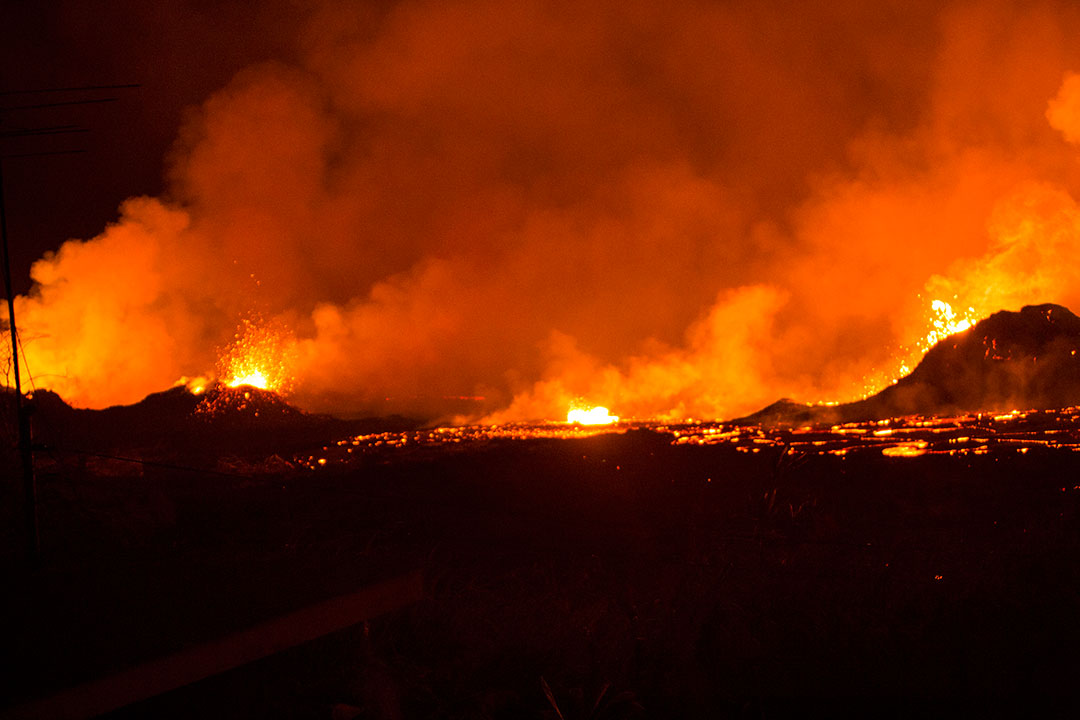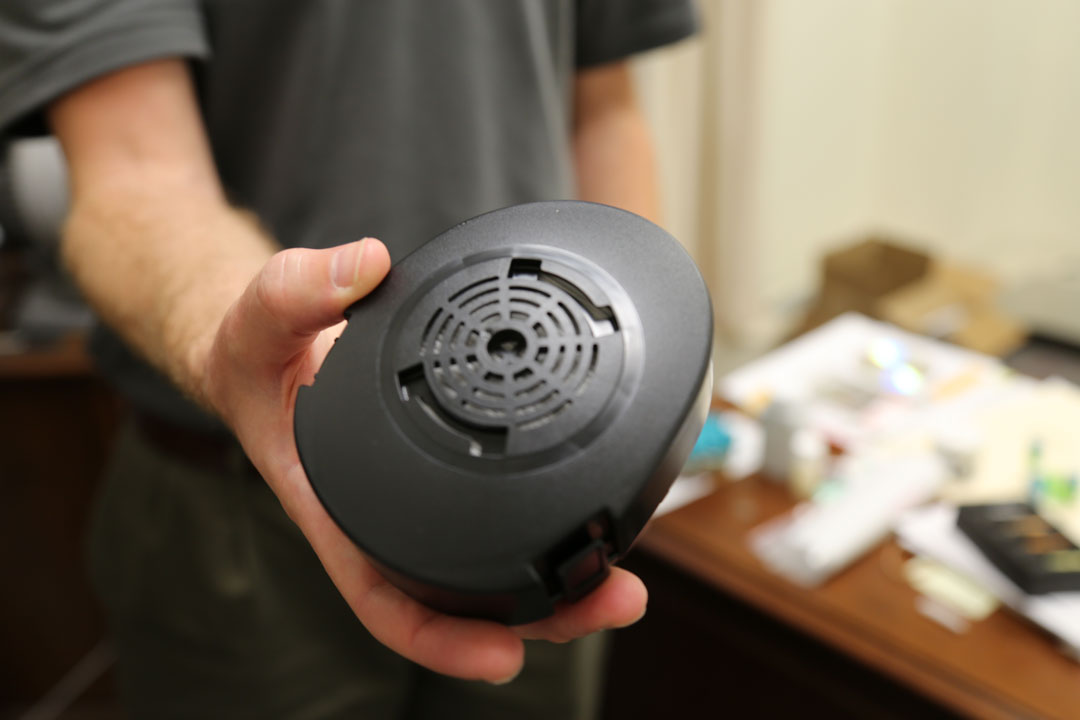// NEWS RELEASE
In wake of volcanic eruption, RDECOM C&B advises first responders
CCDC Chemical Biological Center Public Affairs | July 9th, 2018
In wake of volcanic eruption, RDECOM C&B advises first responders
DEVCOM CBC Public AffairsJuly 9th, 2018

Volcanic fissures spurt out lava and toxic gas in Pahoa, Hawaii May 25, 2018. First responders remain on standby to evacuate residents in areas heavily affected by the Kilauea volcano eruption. (Photo by Pfc. Trevor Rowett)
As emergency service personnel in Hawaii rescue evacuees and contain damage following the eruption of the volcano Kilauea, scientists at the U.S. Army Research, Development, and Engineering Command Chemical & Biological (RDECOM C&B) Center are providing their expertise to help safeguard the health of first responders.
The volcano’s continued eruption has cast ash and chemicals into the air, posing a health concern for first responders. For a century, RDECOM C&B scientists have developed equipment to protect warfighters for situations where they may be exposed to chemicals on the battlefield.
Chemicals of concern include sulfur dioxide, hydrogen sulfide, and hydrochloric acid. At certain concentrations and length of exposure, sulfur dioxide and hydrogen sulfide can cause life threatening respiratory issues, especially for those with lung diseases like asthma. Hydrochloric acid can causes severe burns, irritation, and respiratory system issues.
“Both the National Guard and the U.S. Navy came to us with questions about these chemicals in the atmosphere and protections available for those chemicals,” said Greg Peterson, an RDECOM C&B Center chemical engineer. “Our role is to tell them how best to use the filters, problems to look out for and things to be aware of.”
Peterson said he’s been sharing technical details on several filters, estimates on their duration and potential problems like oxygen-depleting atmospheres and filter fires. Peterson said he’s aware of one report of oxygen depletion.
Three filters are being used by responders in the Kilauea crisis — the M61, C2A1, and the GP filter — and all were developed at RDECOM C&B. Each protects against the same threats, but they are used on different masks.
“They’re good against chemical warfare agents and acid gases,” Peterson said. “Differences arise from the needs of the user. For example, the M61 filter is used on the M50 Joint Service General Purpose Mask, while the GP filter is used on the M53 Chemical Biological Mask used by Special Operations. The two have different specifications.”

All the filters use high efficiency particulate air (HEPA) filtration and activated carbon to protect the user. HEPA filters block soot, ash and other aerosols. Activated carbon limits chemical threats through adsorption and chemical reaction. At some point, Peterson said, the filters would have to be replaced, as soot could clog the filter or the capacity of the carbon is used up.
During response operations, the Navy sent a used mask to the lab for evaluation. Peterson and his team responded immediately, analyzing the filter for degradation and performance.
“The filter we received weighed a lot more than a typical filter,” Peterson said. “This could be due to soot and ash from the volcano. It could also be from water loaded on the carbon. Or it could be from other contaminants. “
“We are working with the Navy to develop a standard operating procedure for logging data when using filters so we have more information when we go to test it,” Peterson added.
After the evaluation, Peterson determined that the masks were well-equipped to serve the needs of responders.
“In this case we’re seeing low concentrations of chemicals,” he said, noting that the masks are designed for higher concentrations.
Through working with the National Guard and the Navy, Peterson hopes to gain new perspectives that lead to new ideas
“At the end of the day, our primary goal at the RDECOM C&B Center is to support the warfighter,” Peterson said. “This reach-back support leads to mission readiness and provides the warfighter the means to successfully complete the mission.”
The U.S. Army Combat Capabilities Development Command (DEVCOM) leads in the discovery, development and delivery of technology-based capabilities to enable Soldiers to win our nation’s wars and come home safely. DEVCOM is a major subordinate command of the U.S. Army Futures Command. The DEVCOM Chemical Biological Center is the Army’s principal research and development center for chemical and biological defense technology, engineering and field operations. The DEVCOM Chemical Biological Center is headquartered at Aberdeen Proving Ground, Maryland.
